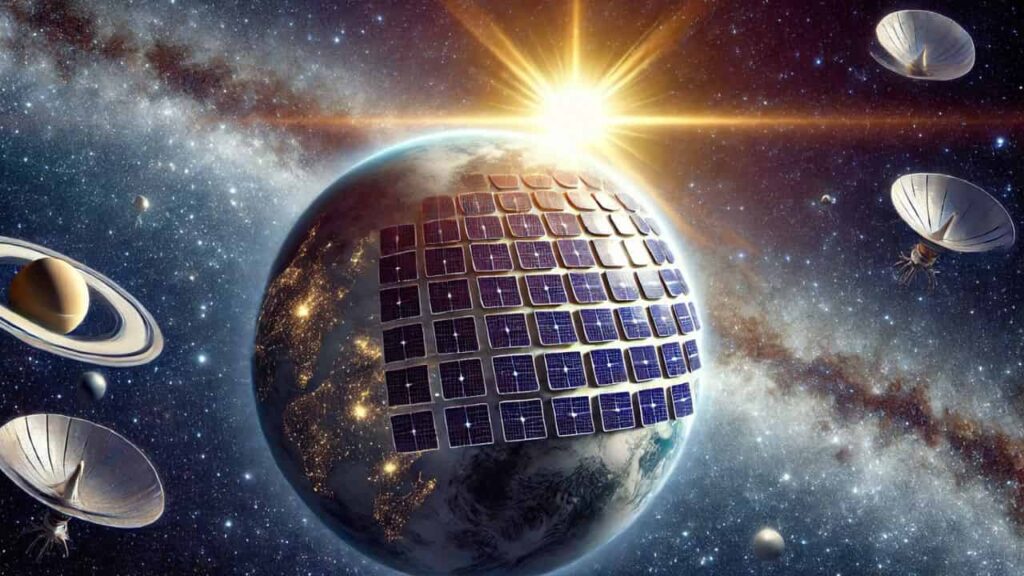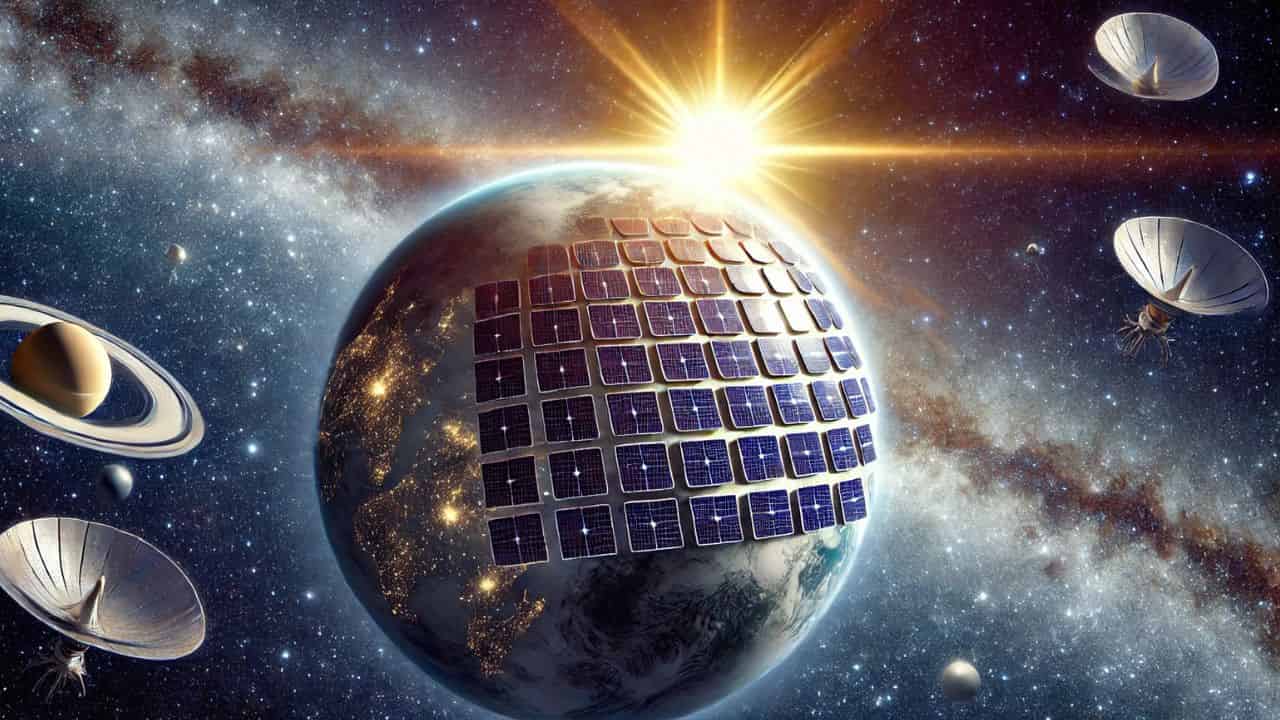NASA, alien civilizations, technosignatures, solar panels, extraterrestrial life, advanced civilizations, Fermi paradox, space exploration, silicon solar panels, energy harvesting, NASA research
Discover why NASA scientists believe we might not detect technosignatures like solar panel arrays from advanced alien civilizations. Explore the implications of modest energy requirements, advanced technologies, and the Fermi paradox in our search for extraterrestrial life.

NASA Scientists on Why We Might Not Spot Solar Panel Technosignatures
One of NASA’s key priorities is understanding the potential for life elsewhere in the universe. While NASA has not found any credible evidence of extraterrestrial life, the agency continues to explore the solar system and beyond to help answer fundamental questions, including whether we are alone in the universe. A recent paper published in the Astrophysical Journal on May 24 explores one such question, focusing on the detectability of advanced extraterrestrial civilizations through technosignatures.
For those who study the potential for life beyond Earth, a primary challenge is determining the likelihood of microbial life versus complex life versus a civilization so advanced that we can spot signs of it, called technosignatures, from Earth. Understanding these possibilities can guide the development of new telescopes and missions, targeting the most promising locations and methods for detecting life.
Technosignatures and Energy Requirements
The paper suggests that if advanced extraterrestrial civilizations exist, their energy requirements may be modest, making them difficult to detect with our current telescopes. If these civilizations do not need vast amounts of power, they may not build large stellar-energy harvesting structures that we could detect from Earth. Such structures, based on our own experience, might include solar panel arrays covering a significant portion of their planet’s surface or orbiting megastructures to harness their star’s energy.
Ravi Kopparapu of NASA’s Goddard Space Flight Center in Greenbelt, Maryland, the lead author of the paper, explains, “We found that even if our current population of about 8 billion stabilizes at 30 billion with a high standard of living, and we only use solar energy for power, we still use way less energy than that provided by all the sunlight illuminating our planet.” This observation highlights that even a large, technologically advanced population might not require energy-harvesting structures large enough to be detectable by our telescopes.
Implications for the Fermi Paradox
The study has implications for the Fermi paradox, which physicist Enrico Fermi postulated. The paradox asks why, given the age and vastness of our galaxy, we have not yet encountered evidence of extraterrestrial civilizations. Kopparapu suggests that civilizations may not feel compelled to expand across the galaxy because they could achieve sustainable population and energy usage levels within their own stellar systems or nearby star systems. As a result, galaxy-spanning civilizations might not exist.
Vincent Kofman, a co-author of the paper at NASA Goddard and American University in Washington, D.C., adds that our technological expertise may not be advanced enough to predict what more advanced civilizations could do. He notes, “Large-scale stellar-energy harvesting structures may especially be obsolete when considering technological advances. Surely a society that can place enormous structures in space would be able to access nuclear fusion or other space-efficient methods of generating power.”
Simulating Detection with Advanced Telescopes
To explore these ideas, the researchers used computer models and NASA satellite data to simulate an Earth-like planet with varying levels of silicon solar panel coverage. They then modeled an advanced telescope like the proposed NASA Habitable Worlds Observatory to see if it could detect solar panels on a planet about 30 light-years away. They found that it would require several hundred hours of observing time with such a telescope to detect signatures from solar panels covering about 23% of the land area on an Earth-like exoplanet. However, the requirement for 30 billion humans at a high standard of living was only about 8.9% solar-panel coverage.
The Role of Technosignatures in the Search for Extraterrestrial Life
Technosignatures, or observational manifestations of extraterrestrial technology, have been a focus of astronomical searches for decades. Scientists have used radio telescopes to look for potential extraterrestrial radio transmissions and more recently proposed using telescopes like the Habitable Worlds Observatory to look for other kinds of technosignatures. These include chemical “fingerprints” in exoplanet atmospheres or specific characteristics in the light reflected by an exoplanet that might indicate the presence of vast silicon solar arrays.
Assumptions and Limitations of the Study
The new study assumes that extraterrestrials would build solar panels out of silicon because it is relatively abundant compared to other elements used in solar power, such as germanium, gallium, or arsenic. Silicon is also effective at converting the light emitted by Sun-like stars into electricity and is cost-effective to mine and manufacture into solar cells.
The researchers further assume that a hypothetical extraterrestrial civilization would rely exclusively on solar energy. If other energy sources, such as nuclear fusion, were used, it would reduce the silicon technosignature, making the civilization even harder to detect. The study also assumes that the civilization’s population stabilizes at some point. If this does not happen, perhaps due to continual expansion into deep space, their technosignatures might be more detectable.
Advanced Technologies Beyond Our Imagination
Ultimately, the difficulty in detecting technosignatures could be due to a combination of modest energy requirements and advanced technologies that we have yet to imagine. It is possible that an advanced civilization may be using something we haven’t imagined yet that requires immense amounts of power. This research provides valuable insights into the challenges of finding advanced extraterrestrial civilizations and suggests that our current search methods may need to evolve to consider these factors.
Conclusion
In conclusion, the recent study by NASA scientists offers a plausible explanation for why we might not spot technosignatures, particularly solar panel arrays, from advanced extraterrestrial civilizations. The modest energy requirements and potential use of advanced, space-efficient power generation methods by such civilizations make them difficult to detect with our current technological capabilities. As our understanding of both our technology and the universe evolves, we may need to develop new methods and tools to uncover the mysteries of potential extraterrestrial life.
The exploration of technosignatures is an evolving field that requires continual advancements in our observational capabilities and theoretical understanding. While the current study provides a framework for considering the limitations of our detection methods, future research and technological innovations may offer new ways to identify and study extraterrestrial civilizations. As we continue to explore the cosmos, the quest to answer whether we are alone in the universe remains one of the most profound and exciting challenges of our time.
Read More
- NASA GOLD Mission Discovers Surprising Alphabetical Shapes in Earth’s Ionosphere
- 5 Best Compact Refrigerators 2023
- Top 5 Best 6K & 8K Cameras for Filmmaking 2023
- TOP 5 Best TCL TVs in 2023










